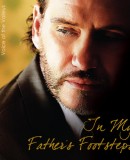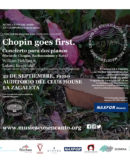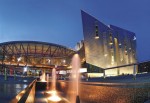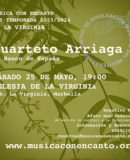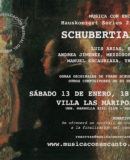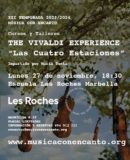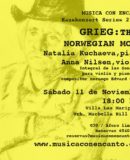Mi Barrio
MI BARRIO
Some thoughts out loud on living in ‘el pueblo’ rather than an urbanisation
by AJ Linn
The doorbell rang. It was Perla, carrying a plastic bucket full of fish, small dorada still wriggling. When I met him in the street yesterday he had asked me if we wanted any fresh fish. This is how he operates his ‘business’, as he has no phone, and he and his brother go out early most mornings in their small boat from Marbella’s fishing port. They sell the fish to bars and restaurants – and to lucky householders like me who live in the same barrio. Perla is well-known locally for having been a tremendous drinker but who kicked the habit and lost twenty kilos in the process.
Last week I was talking to an old friend whose wife recently died. He had no immediate family and was thinking about going into an old peoples’ home. “I went to see one the other day,” he told me. “Hombre, it was beautiful and it was in the country… but I cannot bring myself to leave this barrio where I’ve lived all my life.”
The word barrio is similar to quartière in French, and the nearest English equivalent would be neighbourhood. It doesn’t mean sector, or area, or even suburb or district. It is a rather imprecise term for a nucleus of streets and buildings that comprise the small patch where most town and city dwellers live out their everyday lives without the need of any form of transport.
Before coming to live in Spain I had always been a country or at most a village dweller. My first ever experience of apartment-living was in El Puerto de Santa María and was an eye-opener. I loved it. It was near enough to the centre of the town for me to be able to cover every need on foot, and, as most people who have gone through the same experience will admit, this is the best way to become really integrated with the local community.
From where I live now, on the Marbella sea front a stone’s throw from the casco antiguo, I can do just about everything on foot except visit the cinema or shop in a hipermercado. There are dozens of small establishments in which most things one could ever need are to be found. Prices are not necessarily higher than in a commercial centre, but the real bargain is the opportunity to interact with your neighbours on a daily basis and exchange local chitchat.
There are two shoe-repairers and one shoe-maker within a minute’s walk, two excellent health food stores and a shop selling organic produce. More bakers and cake shops than I care to count, flower shops, two stationers, a couple of tailors and a shirt maker, three farmacias and more shoe shops than you can shake a stick at. In one street there are four shops selling fresh fruit and vegetables, as well as local cheeses. A carnicería and a pescadería complete the miscellany. And of course the usual multiple bank branches and newspaper kiosks.
I calculate that if one day I forgot my wallet I would have no problem getting credit at about 19 shops – all with a smile.
Perhaps it is the inner man that is best catered for. The bars in my barrio start with the classical bodega style with hanging hams and wide selection of wines, to smart salones de té. With of course everything in-between, ranging from the timeless workmen’s’ bars where the set lunch costs seven euros, to the smart boutique-style tapa bars, in some cases owned by local characters who run them for fun.
The best coffee in all Marbella costs 90 cents and is available in a rather down-at-heel bar that opens every day of the year. The range of breakfast accompaniments are endless; toasted rolls with olive oil, tomato, bacon, cheese, omelette, paté, red and white lard, marmalade…. and then the whole gamut again but with brown bread, molletes, pan cateto, and so on. I calculate that allowing for the fact that typically in the Málaga area there are 20 different coffee combinations, there must be another 50 breakfast options. Every customer is addressed by name and no-one needs to order anything as the two girls behind the bar know what everyone wants without even having to ask.
I won’t even begin to list the restaurants. In fact I’ve never counted them, but there must be more than thirty of the widest variety, from meat to fish to rice to Galician, Asturian and Basque. All within glorious walking distance of where I live. And if I want to roam a little further afield, the Puerto Pesquero is just down the road, with several more fish bars and restaurants.
The place I like best and lunch at as often as possible is in an alley near the Alameda. Its basic menu hasn’t changed a comma since it opened, but you can get them to order in anything you want. Since the partridge had been good one day, I enquired about hare, something not easy to find on the Costa del Sol. The next time I went there I was shown two large hares hanging in the cold store, ready to be cooked to order.
The ‘bodega bar’, which is my local, was started by Manolo, for most of his working life Marbella’s best tailor (Kashogi was one of his clients). During a previous recession he decided to give it up and open a bar. It took him about a year to learn how to serve drinks as fast as most Spaniards seem to want them, and another year to correctly cut jamón de pata negra. He eventually built a thriving little business and sold out eventually to Daniel, semi-retired to Marbella after running a Spanish restaurant in Stockholm for 30 years.
The bar’s clientele is made up of barrio dwellers. Usually the same bunch every lunchtime, swapping gossip and discussing the latest rumour to come out of the town hall. Drinks are bought, free tapas passed around, and often people will bring in a bottle of some new wine so we can try it and give an opinion. We’re mostly on first-name terms, and unusually as far as Spanish social etiquette is concerned, we know what everyone else does – or doesn’t do – for a living, and where each lives. Starting recently a few local flamenco artists drop by and give an impromptu performance at Friday lunchtimes that is as far away from the usual tourist flamenco as the bar is from one serving platos combinados. Often the juerga goes on well into the evening. And the best thing about it is that it’s free. You just pay for whatever you drink or order as tapas or raciones.
As I drive out of Marbella to visit friends’ houses on the urbanisations, I wonder about their day-to-day lives. Do they have a local bar where they regularly drop in for an aperitivo and catch up with their friends? Where do they drive to when they have run out of bread or milk? Do they really have to get their cars out just to fetch the daily newspaper? Not to mention the drive home along the infamous CN-340 after a convivial lunch or dinner.
And most important of all, how do they get in touch with the multitude of Spanish people that make up the backbone and the social infrastructure of every town and village? Is their social contact on this level limited to a mumbled gracias at the supermarket checkout, or a slightly more audible greeting when they visit a local restaurant?
No, I think on balance a barrio is the best place to live, although even if I moved to another barrio I’d have to start all over again making friends with my new neighbours. I think I’ll just stay where I am.
Author AJ Linn
Disclaimer: The views, opinions and positions expressed within this guest article are those of the author AJ Linn alone and do not represent those of the Marbella Marbella website. The accuracy, completeness and validity of any statements made within this article are not guaranteed. We accept no liability for any errors, omissions or representations. The copyright of this content belongs to AJ Linn and any liability with regards to infringement of intellectual property rights remains with the author.





